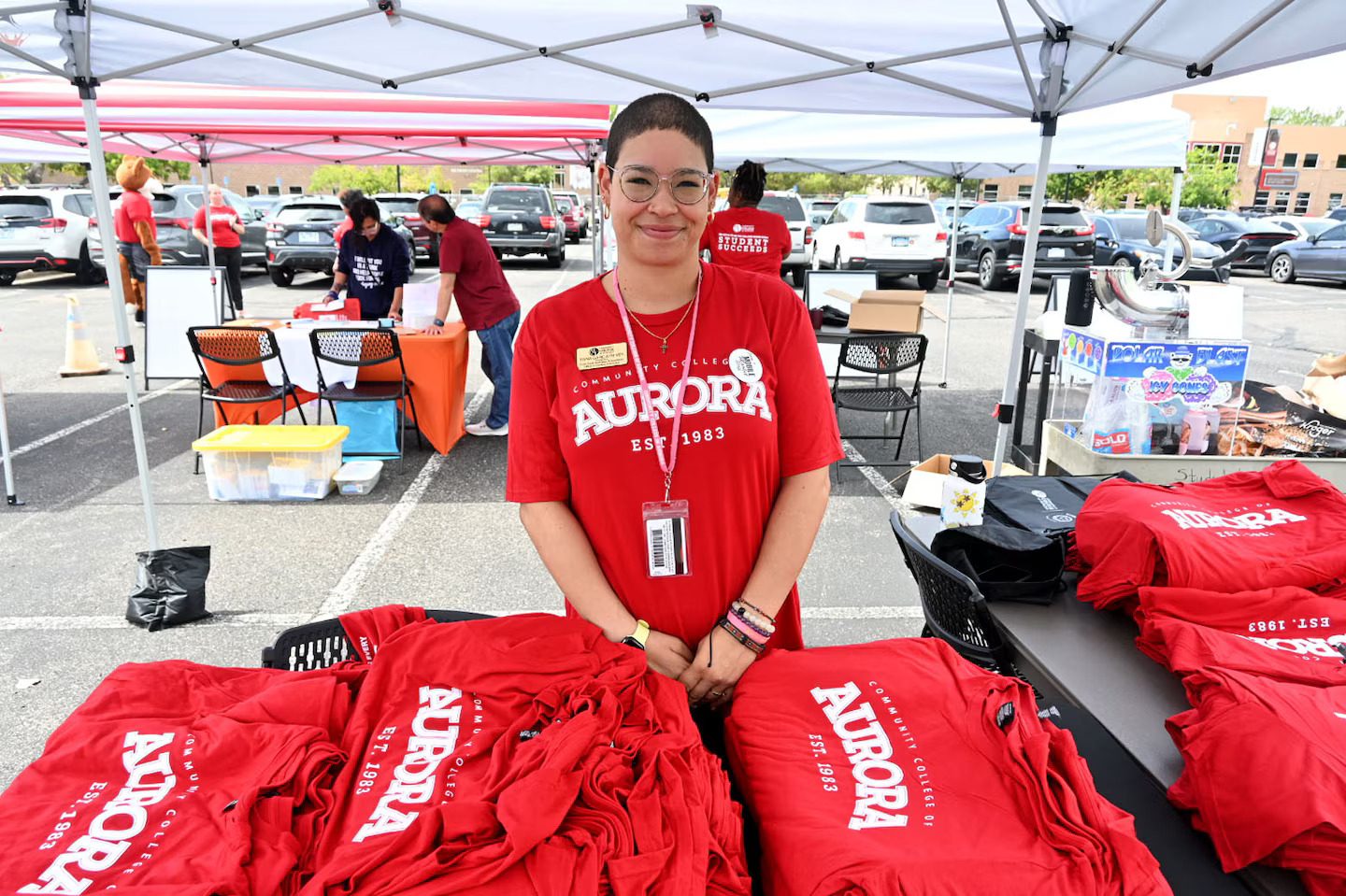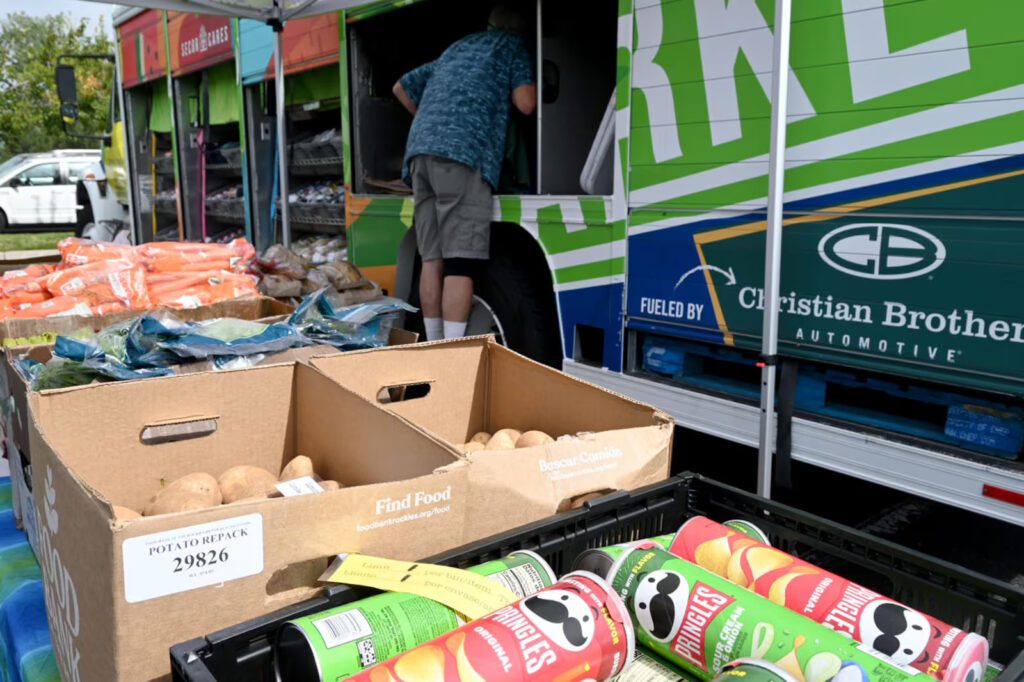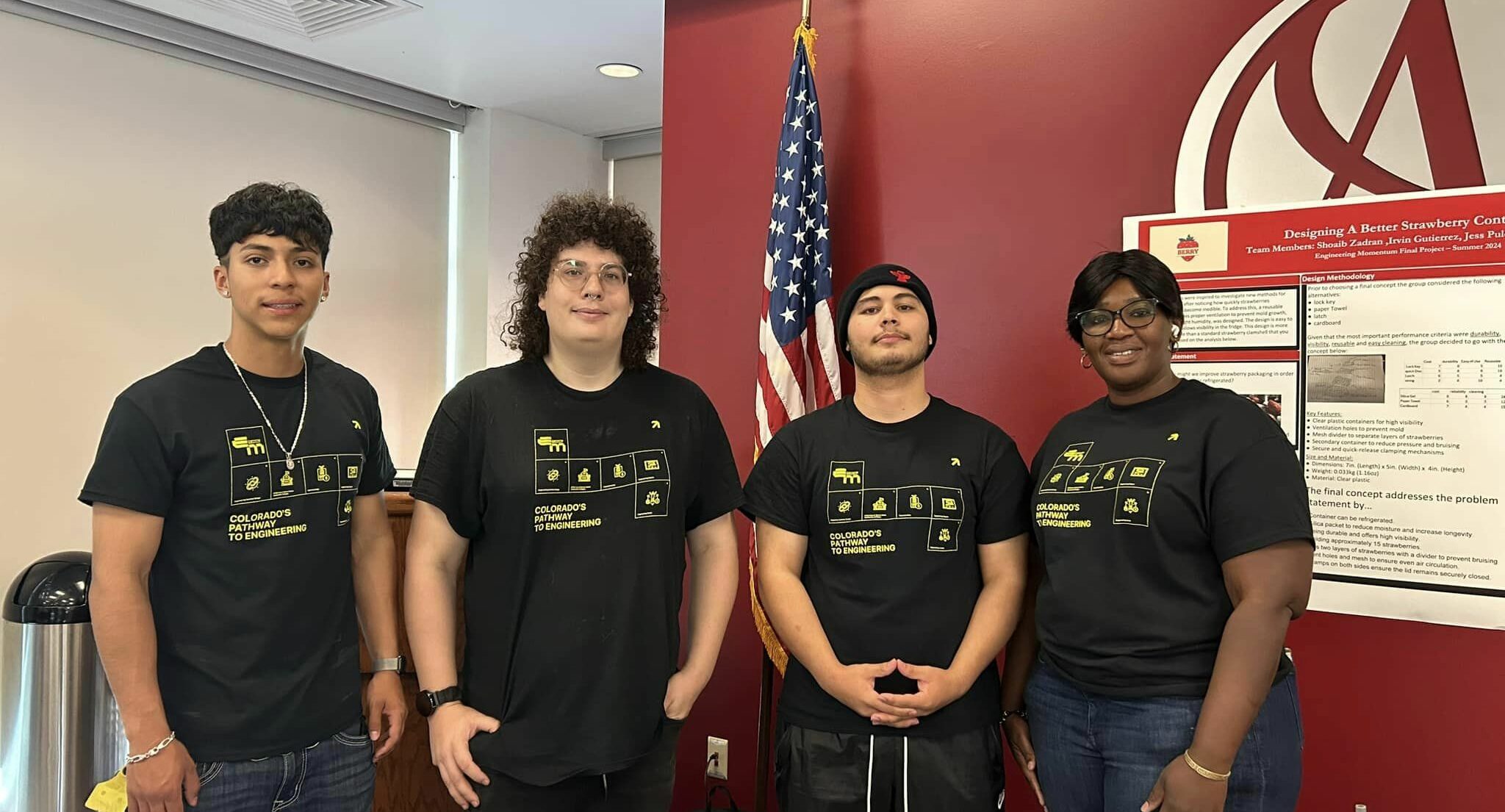
Original article published on Chalkbeat Colorado website on September 9, 2024. Written by Jason Gonzalez.
Foxy’s Mobile Market hadn’t even opened yet, and the line to get free food in the Community College of Aurora (CCA) parking lot already stretched 30 students deep.
At the mobile market’s first visit of the new school year, students could grab potatoes, carrots, celery, Pringles, assorted canned goods, and some refrigerated meat. Staff members also lined up to help those students get connected to federal food assistance, transportation, and other school resources.
Taina Garcia-Reyes, who on that August day worked at the market passing out free red CCA shirts, said it’s a valuable resource, especially for the many students who struggle to feed themselves and their families while juggling school. She knows this very well, because she’s a student who’s experienced food insecurity herself.
“Anytime I talk with other students, I tell them about the mobile market,” she said. “And students know now, it’s OK to go get your bread. Go get your chips.”

The Community College of Aurora has joined the growing number of colleges nationwide providing free food to students, hiring staff to increase food access and erase a commonplace stigma around asking for help.
Many community colleges and universities in Colorado and the nation now provide food assistance to students at a time when food costs have spiked and more students are believed to be experiencing hunger. The pandemic helped highlight the problem, and many schools have committed to continue funding such food resources after federal COVID aid for colleges runs dry later this month.
An estimated 23% of college students in 2020, or about 3.8 million students, experienced food insecurity, according to a federal analysis released in July. The report again shed light on what previous analysis of federal data have shown — that a large share of students struggle to put food on the table. The study reported that about 2.2 million of those 3.8 million students had low food security, or ate less than they should or skipped meals altogether.
And the share who experience student hunger has likely grown in the pandemic’s wake, according to Mark Huelsman, the director of policy and advocacy at The Hope Center at Temple University that studies the barriers college students face.
“This has always been a persistent problem in higher education,” Huelsman said. “The fact that we’re starting to see campuses create ecosystems of support for students, hopefully that means more students will be able to take advantage.”
Having that support, to get through it from the college — that’s important.
Addressing Food Insecurity to Support Student Success
Before Garcia-Reyes passed out shirts at the mobile market, she grabbed a few groceries for herself and her family.
Garcia-Reyes, 35, started her second try at being a college student in 2021. She and her husband felt it was important for her to finish her education. But it hasn’t been easy.
Helping students put food on the table doesn’t solve every difficulty students face. But Aurora officials know that school serves many students with major challenges to overcome before they can graduate, such as being from low-income backgrounds or the first in their families to go to college.
So the food assistance from Foxy’s Mobile Market and other sources eases an everyday burden and helps students like Garcia-Reyes better manage their studies and lives outside of schools, or even bigger life crises, said Reyna Anaya, senior student affairs officer and dean of student success.
In her second semester, professors noticed Garcia-Reyes was struggling. She’s managed mental health issues her entire life, but after her grandmother in Puerto Rico died after a long illness, she struggled to concentrate on her studies. She also underwent hand surgery.
The food she gets from Foxy’s Mobile Market helps take one big worry off her plate. She also gets benefits from the Supplemental Nutrition Assistance Program, commonly known as SNAP, a federal nutrition assistance program that provides a food stipend to eligible individuals and families. The school helped her connect to SNAP, which she’s used in the past.

Foxy’s Mobile Market visits the two Aurora campuses twice a month and the school pays about $3,000 for the food on the truck per visit. The school partners with SECOR Cares, a food program for Denver-area families.
The market feeds about 150 students on average every visit to the two campuses, and many have parents, kids, or spouses at home who also benefit, said Megan Dempsey, CCA’s coordinator of basic needs and student wellness.
Garcia-Reyes said school leaders helped “really open my eyes” to ways the school wants to help her meet basic needs like food. The support extends beyond food.
“I want to get my degree and I want to be able to not be stressed. But the stress comes, and what can I do?” she said. “Having that support, to get through it from the college — that’s important.”
This article has been shortened to highlight key points. The original version, which includes additional content, can be found here.


